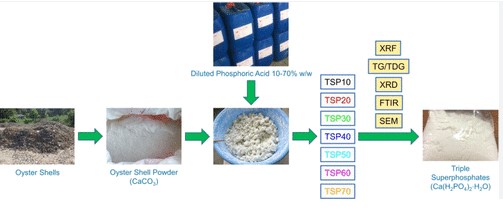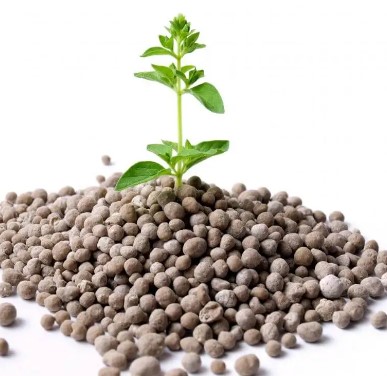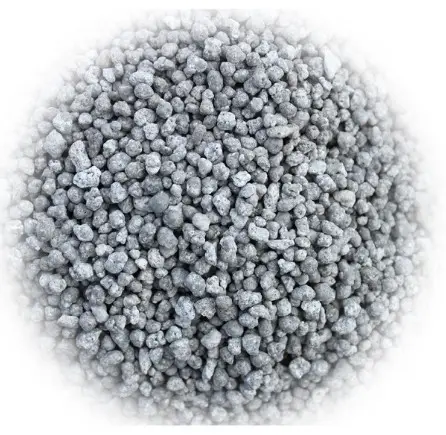Phosphorus plays a pivotal role in the agricultural sphere, serving as an essential nutrient that supports the robust growth and development of plants. Its significance in aiding root development, flower and seed production, and the process of photosynthesis is unparalleled. Given this backdrop, phosphate fertilizers, namely Single Superphosphate (SSP) and Triple Superphosphate (TSP), emerge as crucial agents in enhancing soil fertility and boosting crop yields. These fertilizers, while sharing a common goal, differ fundamentally in composition and application.
Single Superphosphate (SSP) and Triple Superphosphate (TSP) are both phosphate-based fertilizers, but they differ significantly in their phosphorus content. SSP typically contains 18-20% phosphorus, whereas TSP boasts a higher concentration, with 45-48% phosphorus. This fundamental distinction marks the primary difference between the two, affecting their suitability and application in various agricultural contexts.
The exploration into SSP and TSP extends beyond just their phosphorus content. Factors such as their chemical formulation, impact on soil health, environmental repercussions, and economic considerations play a crucial role in determining their application. As agriculture continues to evolve, understanding these nuances becomes imperative for optimizing crop production and sustainability.

Single Superphosphate (SSP)
Composition and Production
Single Superphosphate (SSP) is a phosphate fertilizer commonly used in the agricultural sector. It is produced by mixing finely ground phosphate rock with sulfuric acid, which chemically converts the rock’s phosphorus content into a form that plants can absorb more easily. The main component of SSP is mono-calcium phosphate and it contains about 18-20% phosphorus, which is crucial for plant growth. The production process also generates gypsum, a by-product that can benefit soil structure.
Benefits in Agriculture
SSP offers several benefits to the agricultural industry. Its application enhances root development and improves flowering and seed production in crops. By supplying a moderate amount of phosphorus, it supports the energy transfer within the plant, essential for photosynthesis and growth. SSP is particularly valued for its soil-enhancing gypsum, which helps in improving soil structure and water penetration.
Application Guidelines
To maximize the benefits of SSP, it is important to follow these application guidelines:
- Soil Test: Always begin with a soil test to determine the existing phosphorus levels and the soil’s pH. This information helps in deciding the right amount of SSP to apply.
- Application Timing: SSP is best applied before planting or during seedbed preparation to ensure the phosphorus is available to young roots.
- Incorporation into Soil: For optimal results, SSP should be evenly distributed and incorporated into the soil. This promotes better root contact with the fertilizer.
Triple Superphosphate (TSP)
Composition and Production
Triple Superphosphate (TSP) is a more concentrated form of phosphate fertilizer, containing about 45-48% phosphorus. It is produced by reacting phosphate rock with phosphoric acid, resulting in a product that is almost entirely mono-calcium phosphate. The higher concentration of phosphorus makes TSP a potent fertilizer choice for crops in need of a significant phosphorus boost.
Enhanced Phosphorus Content
The enhanced phosphorus content in TSP is its most significant advantage. This high concentration means that smaller quantities of TSP can meet the phosphorus needs of crops compared to SSP. It is particularly beneficial for crops planted in soils with low phosphorus levels or for plants with high phosphorus demands.
Application Guidelines
Applying TSP effectively involves careful planning:
- Soil Testing: Like with SSP, start with a soil test to determine phosphorus needs.
- Direct Application: Due to its high concentration, TSP should be applied directly to the soil in targeted areas, preferably at planting time.
- Rate of Application: Follow the soil test recommendations closely to avoid over-application, which can harm soil health and lead to runoff.
Key Differences
Chemical Formulation
- SSP: Composed primarily of mono-calcium phosphate with gypsum as a by-product.
- TSP: Almost entirely mono-calcium phosphate, with a higher phosphorus content and no significant by-products.
Phosphorus Content
- SSP: Contains about 18-20% phosphorus.
- TSP: Boasts a higher phosphorus content of about 45-48%.
Soil Impact
- SSP: Beneficial for soil structure due to the gypsum by-product. It has a gentler impact on soil pH and is suitable for a wider range of soil types.
- TSP: Due to its high phosphorus content, it can lead to soil acidification if used excessively. Best used in soils with low phosphorus levels.
Crop Suitability
- SSP: Ideal for early-stage application and crops sensitive to soil pH changes.
- TSP: Suited for crops requiring a high phosphorus input and for use in soils with low inherent phosphorus.

Environmental Impact
The use of phosphate fertilizers, while beneficial for crop growth, carries potential environmental risks that must be managed with care.
Runoff and Water Pollution
Phosphorus is a key nutrient that, when introduced into water bodies through runoff, can lead to eutrophication. This process causes excessive growth of algae and other aquatic plants, leading to oxygen depletion in the water and significant impacts on aquatic life. The runoff issue is more pronounced with TSP, given its high phosphorus content, but SSP can also contribute to this problem if used improperly.
Key Strategies to Mitigate Runoff:
- Buffer Strips: Planting vegetation between farmland and water bodies can absorb excess nutrients.
- Controlled Application: Ensuring phosphorus is applied at the right time and in the right amounts can reduce the risk of runoff.
Soil Health and Microorganism Balance
Both SSP and TSP have implications for soil health and the balance of soil microorganisms. While SSP’s gypsum content can improve soil structure, excessive use of TSP may lead to soil acidification, affecting microbial diversity and soil health.
Preserving Soil Health:
- Regular Soil Testing: Monitoring soil pH and nutrient levels helps adjust fertilizer use to avoid negative impacts.
- Crop Rotation: Different crops have varying nutrient needs, helping to maintain soil balance.
Economic Considerations
The economic aspects of using SSP and TSP are vital for farmers, affecting the overall cost-effectiveness of their agricultural practices.
Cost-effectiveness
While TSP is more phosphorus-dense and potentially offers more value per unit of phosphorus, its higher cost per ton can make SSP a more cost-effective option for some farmers. The decision between SSP and TSP should therefore consider both the cost per unit of nutrient and the specific needs of the crop and soil.
Availability and Market Trends
Market trends can influence the availability and price of SSP and TSP. Factors such as global demand for phosphate fertilizers, geopolitical issues, and production costs play significant roles. Staying informed about these trends can help farmers make more cost-effective purchasing decisions.
Choosing the Right Fertilizer
Selecting the appropriate phosphate fertilizer is a multifaceted decision involving several critical factors.
Soil Test and Nutrient Requirement
- Soil Testing: The first step is to conduct a comprehensive soil test to assess the current levels of phosphorus and other nutrients.
- Nutrient Requirement: Evaluate the specific nutrient requirements of the intended crop, considering the soil test results.
Crop Type and Growth Stage
- Crop Type: Different crops have varying phosphorus needs. For example, root crops may benefit more from SSP, while grains may respond better to TSP.
- Growth Stage: The crop’s growth stage also influences fertilizer choice. TSP may be more suitable for the initial planting phase to quickly establish root systems.
Environmental Considerations
- Runoff Potential: Consider the farm’s proximity to water bodies and the potential for phosphorus runoff.
- Soil Health: Take into account the long-term impact of fertilizer use on soil health and microorganism balance.
Making an informed decision requires a balance of agronomic, economic, and environmental considerations. The goal is to ensure that crop nutrition needs are met in a way that is economically viable and environmentally sustainable.
Frequently Asked Questions
What is phosphorus used for in plants?
Phosphorus is a critical nutrient for plants, integral to several key processes including energy transfer, photosynthesis, and the synthesis of nucleic acids. It plays a pivotal role in root development, flowering, and seed production, ensuring plants grow to their full potential and yield abundantly.
How do SSP and TSP impact soil health?
SSP and TSP impact soil health differently due to their varying phosphorus content and chemical makeup. SSP, being less concentrated, is gentler on the soil and beneficial for microorganism balance. TSP, with its higher phosphorus content, can lead to quicker nutrient release but might also increase the risk of soil acidification if used excessively.
Can SSP and TSP be used together?
Using SSP and TSP together is not commonly practiced due to their differing phosphorus concentrations. Farmers typically choose between them based on soil phosphorus levels, crop type, and specific growth stages. However, in some cases, a combination might be used to tailor nutrient management plans more precisely.
Which crops benefit most from SSP and TSP?
SSP is often favored for crops that thrive in less acidic soils and for early-stage application, given its slower release of phosphorus. TSP, with its quick-release formula, is better suited for crops requiring high phosphorus levels or for use during planting in soils with low phosphorus content.
Conclusion
In the realm of agriculture, making informed decisions about fertilizer use is not just about boosting yields but also about fostering sustainable farming practices. Understanding the differences between Single Superphosphate and Triple Superphosphate is fundamental for farmers, agronomists, and environmentalists alike. It encapsulates the broader goal of achieving optimal crop health and productivity while minimizing environmental impact.
As the agricultural landscape continues to evolve, the importance of choosing the right fertilizer—be it SSP or TSP—cannot be overstated. It’s a decision that affects not just the immediate crop cycle but the long-term fertility of the soil and the sustainability of farming practices. Through informed choices, we pave the way for a future where agriculture thrives in harmony with the environment.

